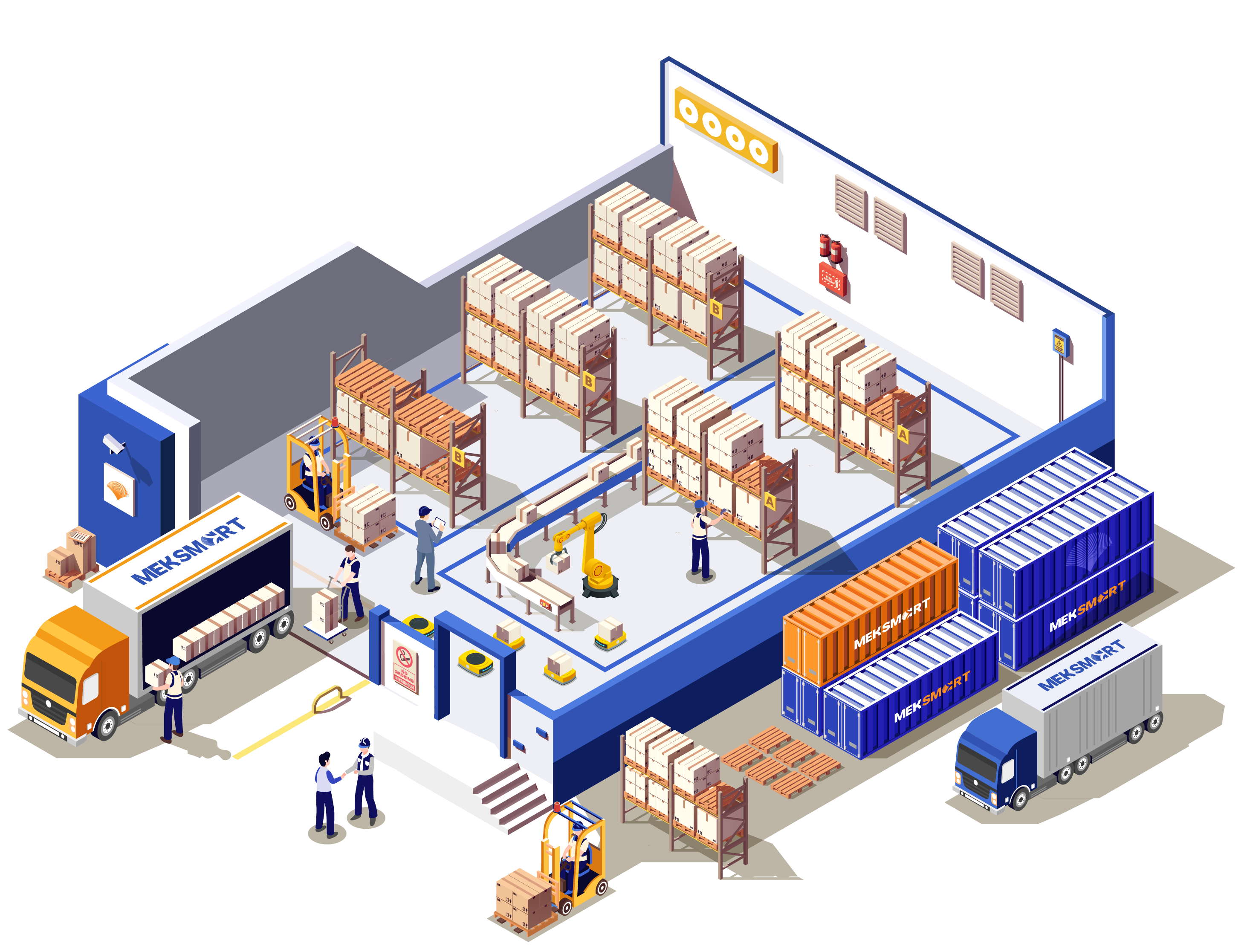MEKSMART
GENERAL NEWS
Author:
Update: 14/12/2022
OUT OF STOCK - CAUSING MORE DAMAGE THAN YOU THINK
Any employee in the supply chain also understands the seriousness of (Out of Stock), but not all retailers try to improve the status of oos or improve in the most effective way to reduce its severity.
1. Causes:
Oos is the consequence of countless factors, from labor cost allocation and customer satisfaction to poor communication between suppliers and retailers. But most importantly, the performance and management process in the warehouse…
With the retailer with offline shops, stock (hàng is available in the – warehouse that has at least one unit at the hàng) door is viewed as at least the minimum requirement for any supply chain with the product needs. It is understandable that oos will cause potential revenue loss and lead to profit loss. Not only that, the problem will be associated with the long-term cost and a series of bad results: customers are unhappy, failure to attract buyers and discredit the sale of lẻ… and the most dangerous of the market.
And often, the retailer' faces oos by keeping the inventory higher or spending more money on accelerating the movement of the goods. However, with the variety of information and modern tools such as today, the impact of oos is that the impact of the oos is entirely possible and the impact is identified.
2. Impact from - of-stock
Minus revenue:
- Offline: buyers with random demand are limited to the store
- Online: customers search for other brand products, resulting in potential revenue loss
Reduce customer loyalty:
- Oos is often leading to the reduction of traffic on both online and offline channels, and the most dangerous is the customer
Increase overhead:
- The demand to fill the shelves will affect the profit due to increased shipping costs between points, and the general inventory cost
- The retailer is passive, only reacting when there is a problem, instead of planning
.png)
3. Remedies
Correct measurement
- Measure inventory accurately is the beginning of stock to improve our stock and requires the ability to control the inventory that is available and process, the way the goods are added.
- Causes of stock can come from many aspects such as supply chain operation, planning capacity, and inaccurate statistical data, ….
- The best retailer should use support systems or simply excel to update data right at the sale point. Using simple (có systems such as excel or higher, depending on the size and quantity of the updated data right at the selling point. These tools also benefit if the retailer has more than one basis to collect overall data
Review and revise processes
- Compliance with regulations on inventories of inventory, keeping the goods, and the accuracy of data as minimum requirements but very important to the warehouse performance. When transporting goods from the warehouse to the store, the manager needs to have an additional schedule of goods and the rules, whether it is made in the system or manually. Regular inventory operations in the warehouse, on the shelf, or checking by scanning the code are important jobs that need to be kept constant.
- Due to the importance of the availability of goods at the store, many retailers are heading towards the order concentrated (centralized ordering). For certain sectors and retail categories, it is particularly fresh, placing orders based on history that allows for better inventory and more flexible inventory. The benefits of focusing on – are especially consistent with consistency and ability to focus on time links with inventory control and – customer care can exceed traditional order-order activities.
Plus a different approach is automatic supplemental systems. Most retailers have either or are moving to add automatic goods that allow the system to calculate the supply factors, the trend of selling – goods, the báo, the minimum inventory requirements, the frequency of delivery, and the size of the case package. - The main barrier to the effectiveness of these systems is the problem of managing the capital management system that is following systems at the store level.
Technology innovation
- Plus, there's almost no meeting to improve any performance that doesn't discuss technological innovation. Some retailers have actively experimented with iodine technology and robotic applications to scan store space and capture inventories, thereby improving the order of goods and supplements.
- Plus traditional retailers are often limited to the view of store management, warehouse, and goods on shelves. The retailer is applying and offers requests to complete the app's ability to show the display capacity and activate the shopping list to supplement. In addition, they are also testing sensor technology, based on visual, based on temperature, based on weight, … to determine the situation in real-time.
- Successful application of technology is also emerging when retailers take the forecasting system and add goods based on machine - learning, …, completely not using manual tools or need to be considered by store staff.
- Not long ago, industry experts predicted that RFID tagging would create a revolution in retail. Today, retailers, especially in high-value commodity segments such as garments, are reconsidering business operations to tag RFID to increase the ability to show inventory in-store and inventory.
Cooperation with upstream partners
- Motivation to limit the elimination of stock is also encouraged to encourage cooperative efforts and increase upstream capacity. The cooperation between suppliers and retailers in upstream to forecast the demand or organization of the promotion events is extremely important to boost inventory in time.
- Large retailers are implementing policies requiring strict compliance and sanctions if they are not on time as agreed. Although some of these efforts provide positive results for the retail system, industry experts advise retailers to start by monitoring the performance of the vendor, increasing the cooperation if possible, and eventually switching to penalties when all efforts are made.
To trust the data and rebuild the store space
- A number of retailers tried to build a " – review " schedule for the nature of the nature, which is to build a centralized culture that focuses on continuous performance monitoring in the warehouse to promote general control and responsibilities in store-related goods, vendors, and shops.
- With a large volume of goods, retailers can increase delivery frequency to quickly adjust the high-end situations or out of stock, especially in stores that are limited.
- Vendors with store space management teams also need to re-examine how store posts are based on the sales rate of items and packaging sizes. Meanwhile, traditionally, the shop's position is designed around the need for visuals and packaging. All factors such as the sale rate of the goods, the minimum space of the product, and the capacity of the shelves, … has an impact on the stock, especially in stores with high quantities and high SKUs.
- No customer wants to hear the answer " excuse me, we're out of stock. ” is associated with being out of stock not only affecting revenue, but also brand assets, the relationship with the retailer, and the decision of investors. By investing in appropriate tools, cooperation with optimal manufacturers and distributors, and staff training, retailers will control this situation
According to supplychaindive. com & reply. com







